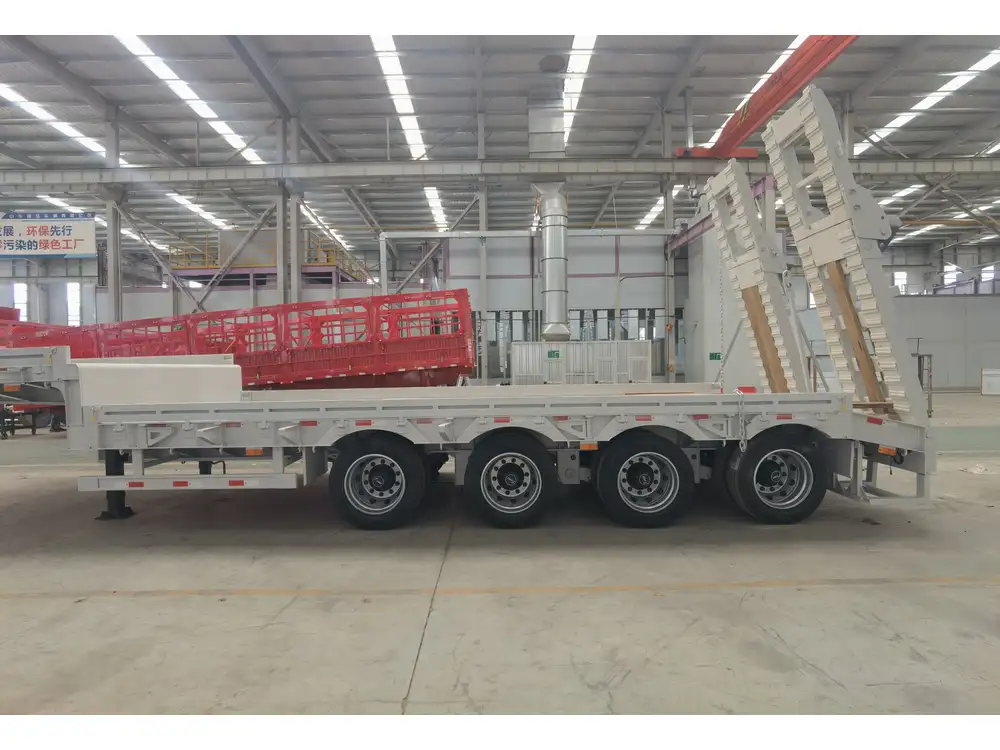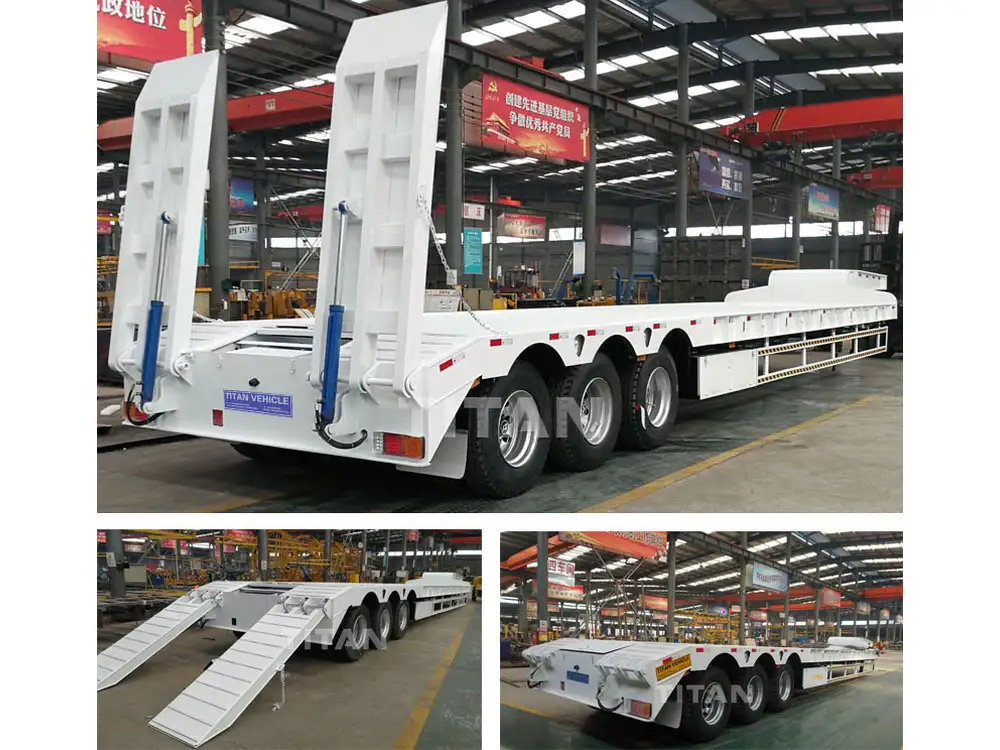In the world of logistics and transportation, the specifications of semi-trailers play a crucial role. Whether you are a fleet manager, a logistics coordinator, or a small business owner contemplating shipping options, understanding the interior dimensions of semi-trailers is vital for optimizing freight, ensuring safety, and maintaining compliance with regulations. This article delves into the essential aspects of semi-trailer interior dimensions, exploring various types, their uses, and how to select the right one for your specific needs.
What Are Semi-Trailers?
Semi-trailers are a staple of the trucking industry, designed to be towed by a tractor unit. Their design allows for flexibility in cargo transportation, accommodating different types of goods, from bulk products to specialized freight. Comprised of a chassis and an aerodynamic load floor, these trailers lack a front axle, relying on the hitch of the tractor for mobility.
Types of Semi-Trailers and Their Dimensions
There are various types of semi-trailers, each with unique interior dimensions tailored for specific loads. Here’s a comparative table to give you a clearer understanding:
| Type of Semi-Trailer | Interior Width | Interior Height | Interior Length | Typical Uses |
|---|---|---|---|---|
| Flatbed | 8.5 feet | Varies (often no sides) | 20 to 53 feet | Building materials, oversized cargo |
| Dry Van | 8 feet | 8 to 8.5 feet | 28 to 53 feet | General freight, packaged goods |
| Reefer | 7.5 to 8 feet | 7 to 8.5 feet | 28 to 53 feet | Temperature-sensitive goods |
| Tanker | 7.5 to 8 feet | 9 to 10 feet | 28 to 53 feet | Liquid cargo, food-grade materials |
| Lowboy | 8 feet | 2 to 4 feet | 20 to 53 feet | Heavy machinery, construction equipment |

The Importance of Both Internal Width and Height
When selecting the right semi-trailer, understanding both the interior width and height is essential. A well-chosen interior space not only maximizes cargo capacity but also ensures the safety and security of the load during transport.
Width Implications
The standard width for most semi-trailers is 8.5 feet, providing a versatile space for loading. This width accommodates variables such as:
- Side-by-side loading: Effective for pallets and smaller items.
- Loading equipment: Increased space allows for forklifts and other machinery to operate efficiently.
Height Considerations
Trailer height typically ranges from 8 to 8.5 feet for standard types. Higher interiors are advantageous for:
- Tall cargo: Such as pallets stacked high.
- Moving tall machinery: Ensuring no damage occurs during transportation.

Considerations for Interior Length
Interior length is also a significant factor, influencing cargo capacity and compliance with trucking regulations. Depending on the trailer type, standard lengths may vary:
- 20 to 28 feet for shorter jobs: Suitable for regional transport.
- 44 to 53 feet for longer hauls: Ideal for intercontinental shipping, making them quintessential in over-the-road transport.
It’s crucial to note that exceeding these standard lengths may require specialized permits depending on your region.
The Load Capacity Dilemma
Apart from dimensions, the load capacity of a semi-trailer is a serious consideration. Load capacity is influenced not just by your choice of trailer but also by how the load is distributed within that trailer. Unbalanced loads can lead to serious safety issues, including tipping and excessive wear on tires.
Recommended Load Distribution Practices
- Maintain Center of Gravity: Place heavier items in the middle of the trailer.
- Even Weight Distribution: Balance loads evenly across the trailer.
- Use E-Track or Tie-Downs: Secure loads to prevent movement during transit.

Maximizing Efficiency: Choosing the Right Semi-Trailer
Selecting the right semi-trailer involves evaluating specific freight needs, including:
- Weight Capacity: Ensure the selected trailer can handle your cargo weight.
- Type of Freight: Different trailer types cater to specific freight needs.
- Route Considerations: Assess road restrictions related to length and height.
What to Include in Your Transport Assessment
- Route Regulations: Are there any bridge height restrictions?
- Weight Limits: What is the maximum weight for your chosen trailer?
- Loading and Unloading Facilities: Are your logistics compatible with the trailer type?
Regulatory Framework and Compliance
When discussing semi-trailer dimensions, compliance is a critical aspect. In the United States, the Federal Motor Carrier Safety Administration (FMCSA) regulates the overall dimensions for commercial vehicles, including semi-trailers.

Key Points of Compliance
- Maximum Width: 8.5 feet without special permits.
- Maximum Length: Typically 53 feet, with possible exemptions for specific trailer types.
- Weight Limits: Varies by state but typically hovers around 80,000 lbs for semi-trailer combinations.
The Impact of Regulatory Non-compliance
Not adhering to these regulations can lead to hefty fines,. Furthermore, transportation disruptions and potential damages to your reputation in the logistics industry pose hidden costs that can affect business operations.
Best Practices for Interior Maintenance and Safety
Interior maintenance of your semi-trailer contributes significantly to operational efficiency and safety. Regular checks and balances ensure longevity and prevent unexpected breakdowns.

Regular Inspection Checklist
- Floor Integrity: Ensure no significant damage that could compromise load security.
- Wall Condition: Inspect for wear, rust or any cracks that could weaken the trailer.
- Loading Equipment: Ensure any machinery or fittings utilized for loading/unloading are in good condition.
Safety Measures
- Ensure Breathe-ability: If transporting perishable goods, include ventilation designs in your trailer plan.
- Proper Loading Techniques: Train staff in secure loading practices.
- Routine Maintenance Schedules: Set a timeline for full inspections and repairs.
Final Thoughts
Understanding the interior dimensions of semi-trailers is key to optimizing your logistics operations. By considering factors such as width, height, length, load capacity, and compliance with regulatory frameworks, you can significantly improve your business’s efficiency.
Actionable insights such as route assessments, maintenance checks, and compliance with industry regulations will ensure you’re not only transporting goods but moving them effectively. In a competitive market, these nuances can mean the difference between successful logistics and operational setbacks. Hence, having the right semi-trailer for your transport needs is not merely a logistical consideration but a business imperative. By making informed choices, you can substantially enhance your operations and customer satisfaction while steering clear of compliance issues along the way.



